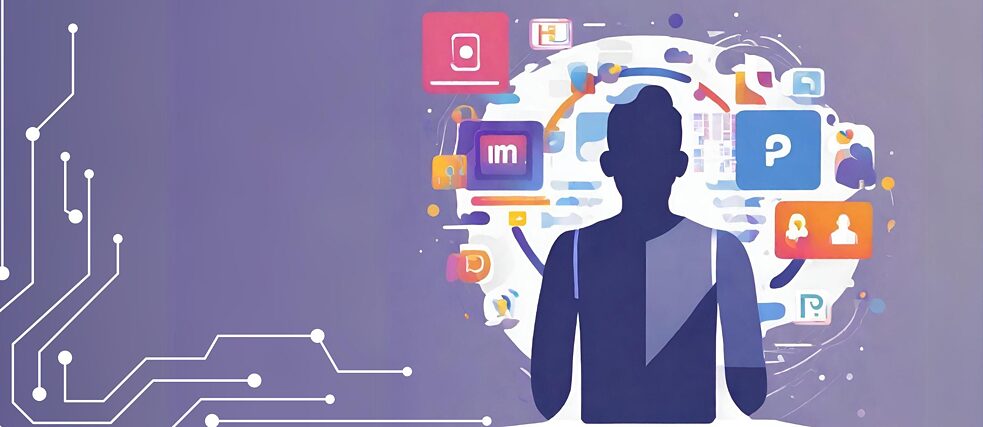Thinking digital platforms anew
“Reimagining digital platforms is also about reclaiming them.”

What has been the impact of digital platforms over the last two decades? The author, drawing from personal insights, navigates through the landscape of social media, shedding light on concerns like data hunger, privacy threats, and the quest for user control.
By Tanvi Negi
I deleted my personal Facebook account in 2012 and quit X (erstwhile Twitter) in 2019. Quitting Twitter wasn’t easy, not because I was someone who posted frequently but because after spending years curating the list of people and accounts I followed, my feed became populated by witty, intelligent people who posted hot takes on current events or through a series of posts took the pains to explain complex issues/ topics in depth.
After overcoming initial withdrawal, I found ways to stay informed without being overwhelmed. Friends share funny social media content via DMs, allowing me to enjoy humour without having to engage in polarizing discourses or exasperating conspiracy theories. while sharing with close friends that all too important expression: laughter. I occasionally use YouTube and LinkedIn for information and entertainment, whilst receiving important news and knowledge via subscribed newspapers, newsletters and channels.
From Utopia to Reality
As any reasonable adult, there is concern about the outsized and often unanticipated impact of digital platforms, especially social media, over the past two decades. Looking back to the initial years of social media platforms, the founders of the biggest platforms had utopian visions of connecting the entire world. The world did become smaller, and it was a thrill to slip into a ‘one-on-one’ conversation with someone unknown. Could anyone have anticipated how the need to monetize attention and time spent by users would lead to the platform’s hunger for data, online harassment and in extreme cases threat to individual privacy and the sovereignty of a nation?And yet, social media, especially platforms that are more visual such as Instagram, YouTube and Tiktok, has been highly successful in making it possible for a creator based in rural Assam posting about local Assamese cuisine to be discovered by a diaspora that is spread worldwide, breaking free from the traditional gatekeepers. Platforms like Facebook, Instagram and YouTube are increasingly courting viewers and content creators in regional languages. Forbes stated that in 2020, a staggering 95% of video consumption on YouTube was in Indian languages. Today, individuals aspire to transition from content consumers to influential creators, a transition facilitated by the expansive reach of these platforms.
Harassment on Digital Platforms
Like real, physical spaces, there is a lopsided use and women's participation in digital public spaces. Harassment of women on digital platforms is certainly not limited to India, and also not limited to social media. Worldwide there have been too many instances of women who are outspoken with their views being subjected to threats of extreme physical violence or alternatively having their views dismissed as too angry or irrational. In India, many women journalists not only face criticism and trolling for the views they express on social media but often turn into personal attacks on how they look, what they wear and the choices they make in their personal lives. While these women are brave to continue engaging with the public on such platforms, one can imagine the emotional toll it takes to be the target of so much anger and vitriol. Another horrific example a few years ago saw Twitter and GitHub being used to target and shame Muslim women who had their photographs and personal details publicly posted. The ease with which misogynists and religious bigots can unite on digital platforms raises concerns about the recurrence of malicious campaigns such as “Sulli Deals” targeting minority communities.In a country where the gender divide in mobile internet access stands at 40%, the lack of a safe space for participation on digital platforms also means that women and young girls are more likely to have their activity on these platforms policed by family members and significant others. It is a vicious circle where the threat of unsafe interaction on digital platforms results in women’s lower participation or exodus resulting in these spaces becoming more exclusionary and misogynistic. The repercussions extend beyond the quality of public discourse, hindering their access to opportunities for personal and professional growth, knowledge acquisition, and networking and communicating with like-minded individuals. Women aren’t the only group that faces harassment on these platforms - religious and gender minorities also find themselves to be the target of harassment.
What could an ideal platform look like?
Envision a digital platform like a public park which is accessible by anyone and where the space itself is malleable and can be repurposed by different users who may come together to connect over shared beliefs, interests and identities. Users have the choice to decide to what level they would want algorithms to guide their user experience and how much data they would like to share with the platform. Or another platform which incentivizes users to log off by linking their digital detoxification to the health of an organic life form (a plant)! Or maybe a community of volunteer “pirates” who raise the consciousness of the users about how they use digital platforms while also ensuring that digital platforms themselves are inclusive, equitable and safe from harassment.In the end, these platforms should aim to revolutionize digital social interactions by ensuring a safe and respectful environment, free from harassment, tracking, and manipulation. This emphasizes the need to increase awareness amongst users to promote civility and respect even in arguments online as well as algorithmic literacy to prevent users from getting unduly influenced by the platform and their customized feed. Reimagining digital platforms is also about reclaiming these digital platforms as spaces that are shaped by our presence or absence.